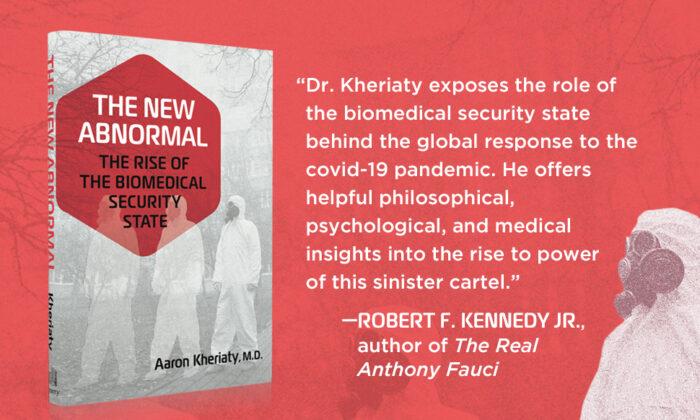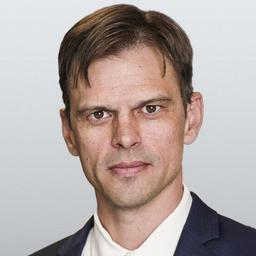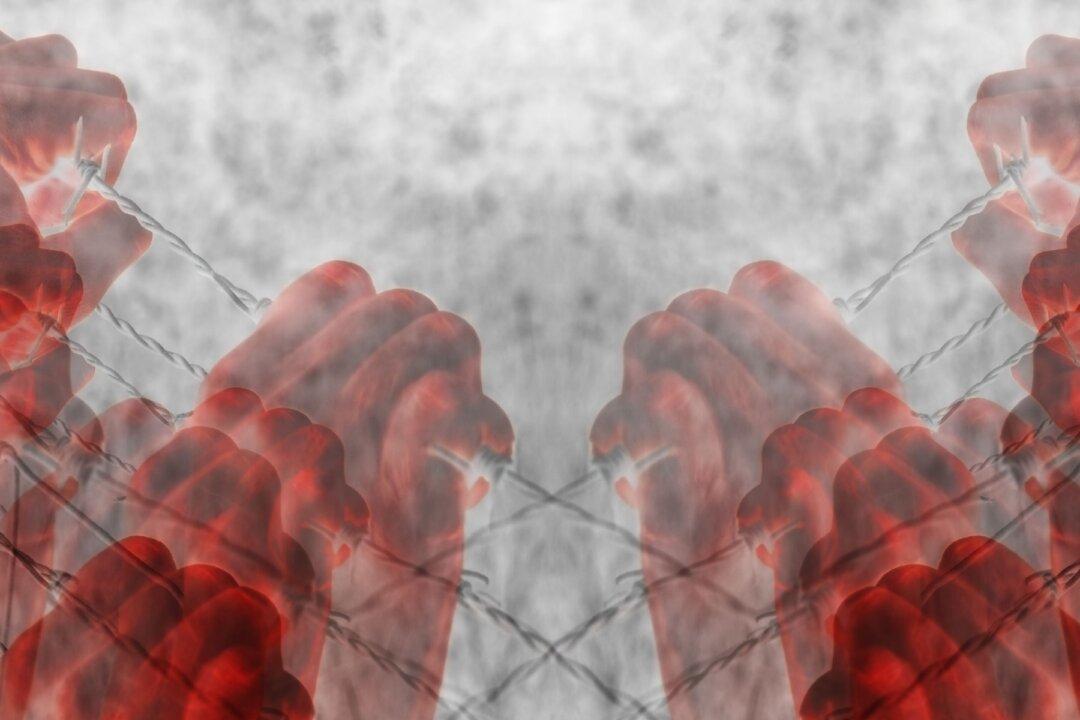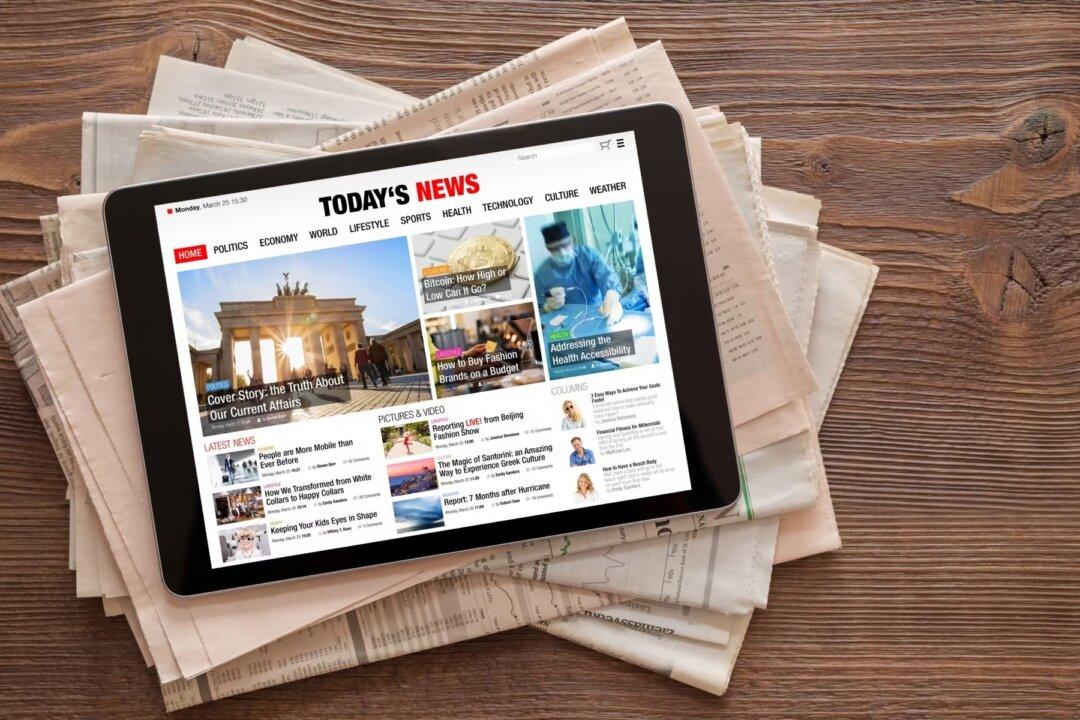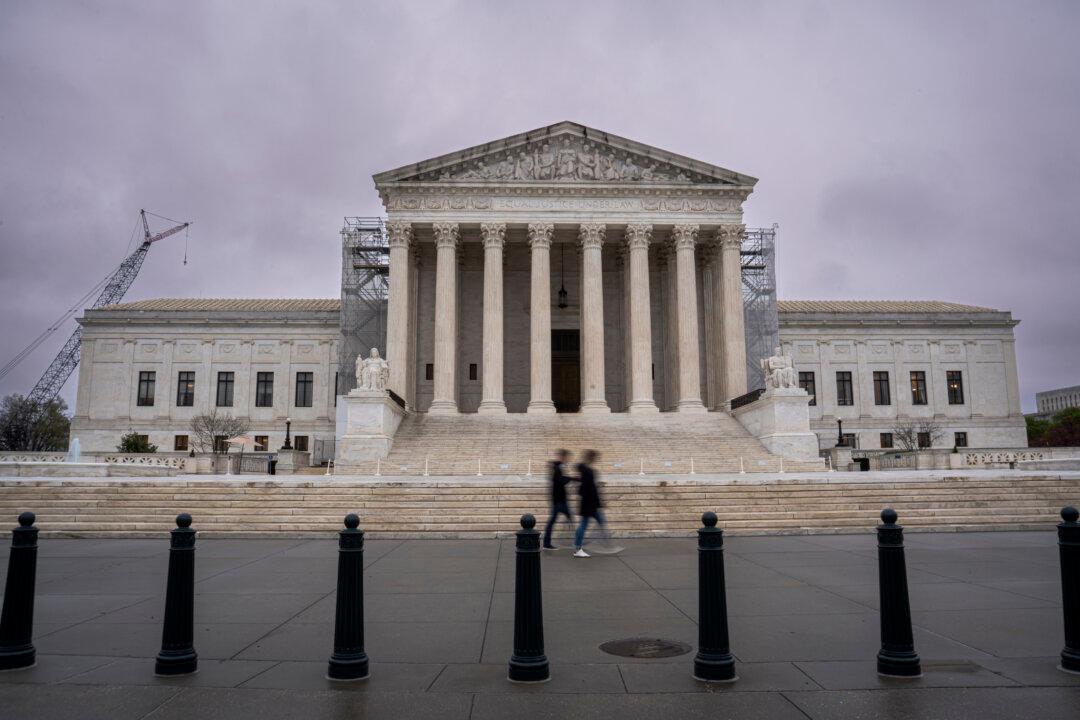Among such warriors of conscience with scars, he stands out for a few reasons. One is his philosophical training and bent. Another is his (discreet) Catholic faith. Catholicism is receptive to the best of reason, both scientific and philosophical. Kheriaty embodies this “both-and” tradition. It allows him to take the measure of the “greatness and misery” of modern science and to critique scientific-technological projects that presume man is god.
The Need for Comprehensive Thinking
Trained to follow the evidence, Kheriaty found that intellectually confronting the “COVID-justified” lockdowns, school closings, multiple required vaccinations, vaccine passports, masks, social distancing, etc. required him to practice the discipline of political philosophy, which examines regimes—the few and the many—authority, power and freedom, and so on.During the pandemic scare, constitutional norms were suspended, civic liberties once taken for granted were denied with insouciance and cruelty, and those “out-of-step” with mandated behaviors were coerced by public and private entities, vilified by the medical establishment and legacy media, and banned by social media behemoths. Comprehensive categories, and comprehensive thinking, were required to take it all in, to find intelligible coherence in what was going on. Occurring in real time, massively visible while also suggesting behind-the-scenes machinations, the task was enormous and daunting. Nor was it just an American reality.
One had to take in the World Health Organization, China, Italy, Israel, the Scandinavian countries, Australia, Great Britain, University College London, Canada, Justin Trudeau (and truckers), along with Anthony Fauci, Francis Collins, Deborah Birx, Rochelle Walensky, Andrew Cuomo, Gavin Newsom, Randi Weingarten, and many others. Last but not least, one had to track the daily indignities inflicted on ordinary citizens whose businesses were shuttered, whose health care was compromised, whose children were subjected to derelict educators, and whose elderly relatives were sequestered, often dying cut off from family and friends.
Insouciant cruelty reigned and took its incalculable toll, while known adverse results were ignored or covered up. There was great irony here, as the purported rationale for the brutal measures was “public health.” Clearly something besides public health as traditionally understood and practiced was at work. We were subject to a Novum, something new under the sun.
The reality of the soul and its higher imperatives and needs were denied. We—or at least our masters—were active Hobbesians, reducing human beings to “bodies in motion.” The Leviathan state was ruthlessly at work at the “service” of its subjects’ “well-being” conceived in reductively biological terms.
This put him on the trail of thoughts and thinkers that could help pull this massive welter of evidence together and make sense of it. The subtitle of his book, “The Rise of the Biomedical Security State,” indicates his chief guide, the Italian philosopher Giorgio Agamben, who had popularized the notion of “the biosecurity state.” Reading Agamben, however, led him beyond even that famous thinker and critic: he discovered Agamben’s forerunner, a lesser-known “professor of the history of health in Paris,” Patrick Zylberman. For Kheriaty, “Zylberman’s work on biosecurity is foundational.”
The costs, however, include our social and rational nature as human beings, our democratic rights and responsibilities, the sacredness of conscience and truth, and the contributions of the biblical traditions that help human beings find their true measure as neither gods nor beasts—the duality that informs the biomedical security state. Below, we will return to more fully consider its nature. History, however, had important lessons to impart about it.
After this initial orientation, Kheriaty pursued a two-front strategy of further reading and reflection, and tracking what was going on. The reading, shockingly, revealed to him that what was going on had been “anticipated.” Indeed, “[i]ntelligence and other government agencies in the United States, in collaboration with public and private sector interests, ha[d] … been war-gaming pandemic scenarios for over two decades.”
“This series of pandemic war games culminated in an astonishing simulation exercise, which preceded the first publicly reported case of COVID by only a few weeks. In October 2019 the renamed John Hopkins Center for Health Security, in partnership with the World Economic Forum and the Bill & Melinda Gates Foundation, organized a tabletop pandemic simulation scenario with epidemiologists and other experts called ‘Event 201: A Global Pandemic Exercise.’
“Participants included high-ranking individuals from the World Bank, the World Economic Forum, the Chinese government, the world’s largest pharmaceutical company (Johnson & Johnson), the CDC, a former NSA/CIA director, and Avril Haynes, later tapped by [President] Biden to be the director of national intelligence—the highest-level intelligence official in the United States. Several of the participants in this simulation quickly moved into key positions to run our real COVID pandemic response only a few months later.”
In a coincidence that Kheriaty calls “remarkable,” Gates opened the exercise by laying out the triggering event: “A new coronavirus (yes, you read that right [interjects Kheriaty]) begins in pigs and spreads to humans.” Later in the exercise, George Gao, “director of the Chinese version of the CDC, worrie[d] how to suppress inevitable rumors that the virus came from a lab.”
Dr. Fauci’s Fundamental Contribution
Not surprisingly, the consummate D.C. operator, Anthony Fauci, was in the thick of things. Indeed, he had a foundational role. “Already in 1989, Fauci organized a conference in D.C. introducing a novel concept of a biosecurity threat.” More precisely:“Fauci’s conference introduced a consequential reframing: the potential threat was not a novel pathogen, such as a virus or a bacteria, whether of natural origin or developed as a bioweapon. Rather, the new paradigm focused instead on humanity as a microbial population vector. The challenge was that people functioned as a conveyance apparatus for viruses or bacteria. In other words, the real problem to be addressed was not a virus but a human population that could spread a virus.”
Having come across this later in his investigations, Kheriaty immediately grasped its importance: “Grasping this point goes a long way towards understanding our failed COVID response. On this reconceptualization, humanity, as part of biological nature, must be managed and controlled through strict biosecurity measures.
Voilà! The biomedical security state is already adumbrated in its foundation and basic structure. Descartes was joined to Hobbes, their respective views that human nature is mere life and science demands mastery of nature (and ultimately human nature) brought together in a grand scheme of social control.
Without going into any of the many details he provides, a short list would include:
1) imprudent or ill-conceived post-9/11 legislation that expanded the concept of “public health,” dramatically increased the power of executives to declare states of emergency, and allowed the “war on terror” to provide a template for future “wars” on pandemics;
2) the rise of digital technologies that made possible exponentially greater surveillance and control of the population by government actors, who did not hesitate to do so, indeed who proceeded to regularly violate the law to collect and use the data;
3) “distorted” Congressional funding priorities concerning public health, indicating the influence of self-interested actors within and without government. In this connection:
4) the well-greased revolving door between Big Pharma and members (heads and scientists) of the “three-letter federal health agencies” (CDC, FDA, NIH) was of “outsized” importance.
5) Legislation in the 90s that allowed Big Pharma to fund these agencies’ activities sealed their capture. Of contextual importance was:
6) the dramatic increase of declared “states of emergency” around the globe, as they became something of a governmental “best practice.”
7) The modern history of the medical profession showed that it could be suborned by ideological regimes, while the Nuremberg Code’s first principle concerning the sacrosanct character of free and informed consent provided the criterion by which one should judge the ethical character of medical practice. Our coercive vaccine-regime failed this test miserably.
The Big Picture
History eventually led to the present, genesis to the thing revealed in its nature. To more fully analyze its nature, Kheriaty, as we said, repaired to two authorities:“Drawing on Patrick Zylberman’s work, Agamben summarized the characteristics of the emerging biosecurity model, in which political recommendations had three basic characteristics: 1) measures were formulated based on possible risk in a hypothetical scenario, with data presented to promote behavior permitting management of an extreme situation; 2) ‘worst case’ logic was adopted as a key element of political rationality; 3) a systematic organization of the entire body of citizens was required to reinforce adhesion to the institutions of government as much as possible.”
Or in somewhat different terminology: “The Italian philosopher Giorgio Agamben, who has studied the state of exception extensively, uses the term ‘biosecurity’ to describe the government apparatus consisting in a new religion of health combined with state power and its state of exception: ‘an apparatus that is probably the most efficient of its kind that Western history has ever known.’”
In Kheriaty’s judgment, “This precisely describes the pandemic strategy we adopted in 2020.”
Or nearly “precisely.” His own observations and study caused him to reformulate things in this way: “the unholy alliance of (1) public health, (2) digital technologies of surveillance and control, and (3) the police powers of the state—what I call the Biomedical Security State—has arrived.” One sees that Kheriaty adds item # 2 to the previous lists.
As we said above, he spends a good deal of time detailing these technologies of surveillance and control, whose exploitation by government (and others, such as universities) was made possible by imprudent post-9/11 legislation and subsequently illegally abused by an alphabet-soup of governmental agencies ostensibly devoted to public safety and health, but in reality partisan, self-serving mercenaries for hire.
In a most cunning way, while these technologies appeared to provide a lifeline of communication to locked-down members of society, in fact, from the perspective and intent of the biosecurity state, they were a panacea and a monitoring device. And everything was justified by taking one’s bearings from the most extreme situation imaginable.
“By 2022, in the wake of new revelations about the lab-leak hypothesis, NIH funding of gain-of-function research at the Wuhan Institute of Virology, vaccine safety issues willfully suppressed, and coordinated media and government smear and censorship campaigns against dissident scientific voices, it seemed the only difference between a conspiracy theory and credible news was about six months.”
Then, turning the tables, he details at length that the greatest purveyor of “disinformation” and “misinformation,” i.e., lies and falsehoods, was the government itself, starting (but not ending) with the CDC and FDA, closely followed by Big Pharma, corporate media, and censorious social platforms.
Taken all together, the items listed above present an intelligible and credible picture of what we all experienced and went through from 2020 to 2022. Democratic society—indeed all of humanity—effectively became the material of a grand experiment in social control and engineering, while constantly being told that it was the unique beneficiary of these admittedly harsh but strictly necessary measures.
Absent concerted action on our part, however, our recent past is our foreseeable future, because neither the ideology nor the power-centers profiting from it have changed. At stake in our response is our liberal democracy and our humanity: this was the great revelation of the two years just passed. Thanks to Aaron Kheriaty, and others like him, we have the intellectual and moral guidance needed to navigate these parlous times. It is essential reading for our apocalyptic times.
